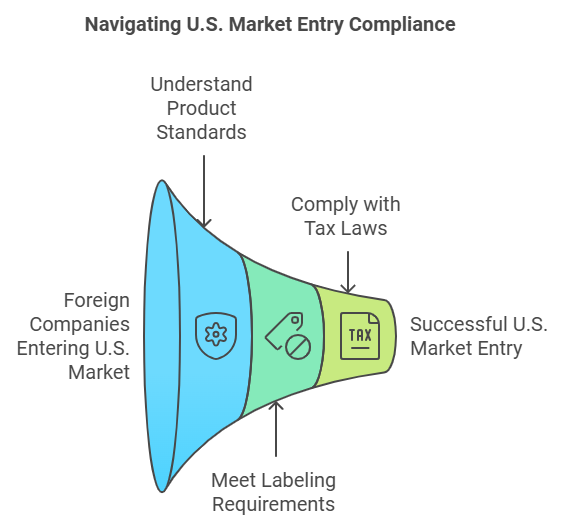
Understanding U.S. Consumer Behavior and Preferences
Understanding U.S. consumer behavior and preferences is one of the key US market research essentials for foreign companies aiming to succeed. U.S. consumers are diverse, and their purchasing decisions are influenced by a range of cultural, economic, and social factors. Recognizing these influences allows you to shape products and services that align with their expectations, making your brand more appealing to this broad audience.
Cultural influences play a significant role in shaping consumer preferences in the U.S. For instance, consumers may value sustainability, convenience, or certain lifestyle factors, depending on the region or demographic. By identifying these trends, you can tailor your offerings to resonate with different customer segments. Additionally, U.S. consumers often favor brands that reflect their own values, which could be anything from supporting local businesses to environmental responsibility.
It’s also important to understand specific buying habits, such as preference for online shopping or brand loyalty tendencies. U.S. consumers increasingly rely on digital platforms for product research, reviews, and purchases. This insight helps you position your brand effectively, whether through online platforms or in-store experiences. When you prioritize understanding U.S. consumer behavior, you set a foundation for long-term success by building meaningful connections with your target audience.
Analyzing Market Size and Growth Potential
Analyzing market size and growth potential is an important part of US market research essentials. By assessing the potential of different U.S. regions and industries, you can identify where your products or services may thrive. Each region in the U.S. has unique economic conditions, demographics, and consumer preferences that influence demand. For example, tech products may perform well in urban centers, while outdoor and recreational goods could see higher demand in areas with a strong outdoor culture.
To evaluate growth potential, it’s essential to study current industry trends and projections. Some sectors may experience rapid growth due to changing consumer behaviors, technological advancements, or emerging needs. Reviewing recent market reports and industry analyses provides insight into which sectors are expanding and where opportunities may lie. This data allows you to forecast demand more accurately and target areas with long-term growth potential.
Growth projections by region can also guide your entry strategy, helping you focus on areas with the highest market expansion rates. If a particular region shows an upward trend in spending within your industry, it could indicate a promising opportunity. By analyzing these factors, you gain a clearer understanding of where to allocate resources, supporting a more effective and profitable entry into the U.S. market.
Navigating U.S. Regulations and Compliance
Navigating U.S. regulations and compliance is a core part of US market research essentials for foreign companies. Understanding and following product standards, labeling requirements, and tax laws is critical to a smooth market entry. For instance, many products sold in the U.S. must meet specific safety or quality standards set by organizations like the FDA or OSHA. Ensuring your products meet these standards helps you avoid costly penalties or delays.
Labeling requirements are also an important aspect of compliance. Products must often display information such as ingredients, country of origin, or safety warnings, depending on the category. Accurate labeling not only meets legal requirements but also builds trust with consumers. Compliance with these rules is essential to maintaining a good reputation and avoiding legal complications in the U.S. market.
Tax laws vary at the federal, state, and local levels, which can be complex for new market entrants. Each state has its own sales tax rates, and some cities may add additional taxes. Understanding your tax obligations helps you avoid unexpected fees and simplifies your operations. By navigating these regulatory requirements, you set a strong foundation for entering the U.S. market confidently and responsibly.
Identifying Competitors and Market Positioning
Identifying competitors and establishing your market position are essential steps in US market research essentials. Researching competitors gives you insight into the current market dynamics and helps you understand what works well in your industry. Start by identifying direct and indirect competitors, looking at both established brands and newer entrants. Analyzing their strengths, weaknesses, and unique selling points can reveal opportunities for differentiation.
Competitive research methods, such as studying competitor websites, social media, and customer reviews, provide valuable information about their products and customer relationships. For example, if you find that many customers praise a competitor’s product quality but criticize their delivery times, you might consider emphasizing faster delivery in your offering. Online tools that track market share, pricing strategies, and customer sentiment can also help you understand your competitors’ market positioning more deeply.
Establishing a unique position in the U.S. market means focusing on what sets you apart. Your unique value proposition should address unmet needs or improve on existing offerings in ways that resonate with U.S. customers. By understanding the competitive landscape and positioning your brand strategically, you create a distinct identity that appeals to your target audience. This approach not only attracts customers but also strengthens your presence in the competitive U.S. market.
Evaluating Distribution Channels and Logistics
Evaluating distribution channels and logistics is an essential part of US market research essentials. Choosing the right channels, such as e-commerce, wholesale, or retail, allows you to effectively reach your target customers. E-commerce offers a direct route to U.S. consumers, allowing you to control brand messaging and customer engagement. Platforms like Amazon and Shopify make it easy to set up online stores, but competition is high, requiring a solid marketing strategy.
Wholesale distribution can be an efficient option if you aim to sell in bulk to established U.S. retailers. This approach can increase your reach through partnerships with major retailers and distributors. However, wholesale often involves lower margins, so it’s important to weigh this against potential sales volume. Retail presence, whether through branded stores or partnerships with retailers, provides direct interaction with customers. Retailing in the U.S. may come with higher operational costs but can enhance brand visibility and customer loyalty.
Logistics is another critical consideration, especially for importing and warehousing products. U.S. import regulations, shipping costs, and warehousing options all affect your overall cost structure and delivery timelines. Partnering with reliable logistics providers and using U.S.-based warehouses can simplify order fulfillment and speed up delivery. By carefully evaluating these channels and logistics factors, you create an efficient distribution strategy that supports a successful U.S. market entry.
Gathering Data on Customer Demographics and Segmentation
Gathering data on customer demographics and segmentation is a core aspect of US market research essentials. To succeed in the U.S. market, you need to understand who your customers are and what influences their decisions. Collecting demographic data such as age, location, and lifestyle helps you tailor your approach and develop products that resonate with specific groups. This data can often be found through government databases, market research firms, and online analytics tools.
Segmenting your audience based on factors like purchasing power allows you to further refine your marketing efforts. By analyzing income levels and spending habits, you can identify customer groups with the capacity to buy your products. This understanding helps you set pricing strategies and choose the right channels to reach them effectively. Knowing these details can also help with messaging, as different income brackets often respond to different marketing tones and offers.
Location is another important factor in segmentation. Consumer preferences and buying behaviors can vary widely across U.S. regions. Urban consumers, for example, might favor convenience and digital services, while rural consumers may prefer in-person interactions. Segmenting your audience in this way helps you address specific needs, making your brand more relevant and appealing. With a thorough approach to demographic data and segmentation, you can create a focused strategy that enhances your chances of success in the U.S.
Conclusion
Understanding US market research essentials is key to a successful entry into the American market. With insights into consumer behavior, competitive positioning, and demographics, you can create a targeted approach. Knowing local regulations and optimizing distribution channels help streamline operations and avoid setbacks. By gathering comprehensive data and using it to shape your strategy, you align your offerings with U.S. customer needs. This focused preparation sets a strong foundation, allowing you to adapt and thrive in a competitive landscape. With a clear, well-researched plan, you can build a lasting presence and maximize your business potential in the U.S.


